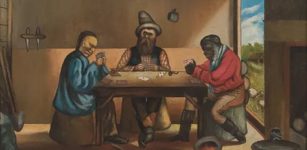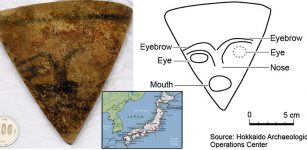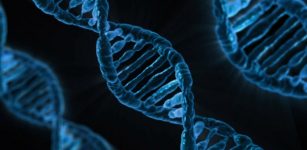Unknown Energy Source Created The Image On The Shroud Of Turin Scientists Suggest
AncientPages.com - Few ancient relics have caused so much heated debated and controversy as the Shroud of Turin.
Is it a forgery or the shroud authentic?
This subject has been discussed for years among various experts.
Adding more fuel to the debate, a recent study indicates that the image on the Shroud was formed by a sort of electromagnetic source of energy. But how people living in medieval times have access to such advanced technology?
The study was conducted by a team of researchers from the National Agency for New Technologies, Energy and Sustainable Economic Development (ENEA), Italy.
The researchers, including Paolo Di Lazzaro, Daniele Murra, Enrico Nichelatti, Antonino Santoni and Giuseppe Baldacchini, successfully created similar effects to the Shroud's markings using ultraviolet light.
What kind of technology was used to create the image?
In an interview with The Telegraph, Dr Paolo Di Lazzaro was asked whether if this was the most plausible way the image on the Shroud of Turin could have been created?
"We obtained a coloration "similar" to that of the body image on the Shroud.
"Similar" means that it replicates several peculiar characteristics of the Shroud image, including the shallow penetration depth and the hue of color, the lack of fluorescence, and the absence of heating effects on the image formation.
However, our coloration still does not match 100 per cent of the physical and chemical characteristics of the Shroud image.
Till now, nobody was able to replicate all the body image characteristics.
This inability to repeat (and therefore falsify) the image on the Shroud makes it impossible to formulate a reliable hypothesis on how the body image was made.
As a consequence, we cannot state ultraviolet light is the most plausible way the original marking was made.
Certainly, the radiation-based attempts (ultraviolet light, corona discharge, protons) gave coloration results which are much closer to the Turin Shroud image than the contact paint or chemical attempts are.
In particular, the recent results obtained by Prof Garlaschelli using acid, powders and paints show the incapacity of chemistry-based attempts to match the original characteristics at the microscopic level, "Dr. Di Lazzaro explained.
Shroud of Turin
Does Dr. Di Lazzaro's studies suggest that the Shroud of Turin is not a medieval fake?
"All the attempts to replicate the body image on the Shroud were partially (often totally) unsuccessful.
We must admit it is not easy creating an image that is negative, has 3D encoded information, is extremely shallow, with the color intensity is determined by the surface density of fibrils all having the same RGB value, and which does not fluoresce under UV illumination.
Modern technologies seem unable to produce an image with the characteristics of the Shroud image, even using the most advanced tools like those used in our experiments.
As a consequence, it is unlikely that a forger could have created this image using technologies available in the Middle Ages.
In addition, we must consider the body image is not the only difficult-to-replicate marking.
On the Shroud there are also stains of blood with high levels of bilirubin which would be consistent with a haemolytic process caused by torture, eg whipping (the bilirubin content being only visible by UV lamps, such as those used by policemen to detect organic traces), there is the absence of image under the blood stains, and many other forensic details unknown in the Middle Ages.
How could the image have been produced 800 years ago without any access to modern advanced technology?
According to Prof Christopher Ramsey of the Oxford Radiocarbon Accelerator Unit, the radiocarbon dating results put the relic at 1260 - 1390AD. This means the Shroud of Turin is about 800 years old. This raises the question how our medieval ancestors could posses technology sophisticated enough to create an image that even our modern technology has difficulties to produce.
"I have no experience of radiocarbon dating. As a consequence, I have to accept the opinion of Prof Ramsey.
However, I note we have a problem: there is an object dated 1260AD that has a microscopic complexity such that it cannot be made by a forger in 1260AD.
Does Prof Ramsey have any idea how to solve this contradiction? Can we collaborate to find a solution? Is it possible to organise a team of experts that reconsider both dating and microscopic characteristics of this extraordinary image?" Dr. Di Lazzaro said.
When Dr. Di Lazzaro was asked if he believes the controversial Shroud of Turin could really be the burial clothes of Jesus, he replied: "As a scientist, I think we will never demonstrate the Shroud is the burial cloth of Christ.
Even if it will be shown this cloth is of the first century, we will have a probability, never a certainty. However, I have studied more than 60 peer-reviewed papers on this topic, analysed a lot of microphotographs and microscope images, read sophisticated spectral information, and considered many other scientific data available.
The more one studies the Shroud from a scientific perspective, the clearer it becomes that this image could not have been made by a forger, either medieval or modern. This allows to come back to the "question of questions": how was the body image on the Shroud made? "
It would seem that the controversy concerning the authenticity of the Shroud of Turin continues...
AncientPages.com





















